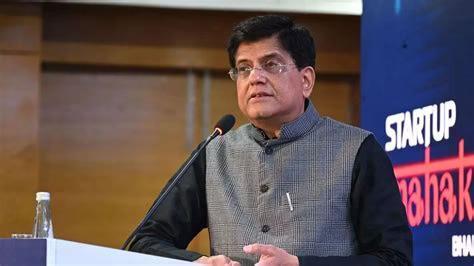
Indian Brands Go Global: Competing on Design & Quality
In a significant shift, Indian brands are no longer content with simply attracting foreign brands to the country. Instead, they are now exporting their own products and services, backed by strong manufacturing capabilities and strategic marketing. This new approach has enabled Indian brands to compete on a global stage, showcasing their design, quality, and innovation to a worldwide audience.
According to Dheeraj Sinha, CEO of FCB India, Indian brands are winning globally on the basis of design, quality, and competitiveness. In an interview with The Core, Sinha highlighted the importance of understanding the global consumer’s preferences and behaviors, saying, “Indian brands need to understand the global consumer’s psyche and design their products and services accordingly.”
One of the key factors contributing to the success of Indian brands abroad is their ability to balance traditional values with modern design sensibilities. For instance, brands like Fabindia, a popular clothing and home furnishings label, have leveraged their understanding of traditional Indian craftsmanship to create unique and high-quality products that resonate with global consumers.
Another factor is the growing emphasis on innovation. Indian brands are investing heavily in research and development, staying ahead of the curve in terms of technology and product design. This has enabled them to create products that are not only competitive on price but also on quality and features.
Take the case of Ola, India’s leading ride-hailing company, which has expanded its operations to several countries, including the UK, Australia, and the Middle East. Ola’s success can be attributed to its innovative approach to the ride-hailing industry, offering services like Ola Share and Ola Bike, which have disrupted the traditional taxi market.
In the consumer goods sector, brands like HUL and ITC have been successful in exporting their products, leveraging their strong manufacturing capabilities and global distribution networks. HUL’s Lux soap, for instance, is a popular brand in several countries, including the Middle East and Africa, while ITC’s Vivel soap has gained significant traction in the Philippines and other Asian markets.
The technology sector is another area where Indian brands are making a mark globally. Brands like Paytm, Zomato, and Swiggy have expanded their operations to several countries, offering services like digital payments, food delivery, and ride-hailing. These brands have leveraged their understanding of the Indian consumer’s preferences and behaviors to create products that are tailored to the global market.
So, what are the key success factors that have enabled Indian brands to compete globally? According to Sinha, it is the combination of design, quality, and competitiveness that has helped Indian brands stand out in the global market. He adds, “Indian brands need to focus on creating products and services that are unique, innovative, and of high quality. They also need to be competitive on price and offer excellent customer service.”
In addition to these factors, Indian brands have also been successful in leveraging their global network of distributors and partners to expand their reach. For instance, HUL has partnered with local companies in several countries to distribute its products, while Ola has partnered with local taxi operators to expand its services in new markets.
As Indian brands continue to expand globally, they will need to navigate the complex landscape of international markets, cultural differences, and regulatory requirements. However, with their strong manufacturing capabilities, strategic marketing, and innovative approach, Indian brands are well-equipped to compete with global giants and establish themselves as serious contenders in the global market.
In conclusion, Indian brands are no longer content with simply attracting foreign brands to the country. Instead, they are now exporting their own products and services, backed by strong manufacturing capabilities and strategic marketing. As perceptions shift, businesses are building brand equity abroad, establishing themselves as serious global contenders in industries ranging from consumer goods to technology.
News Source:






